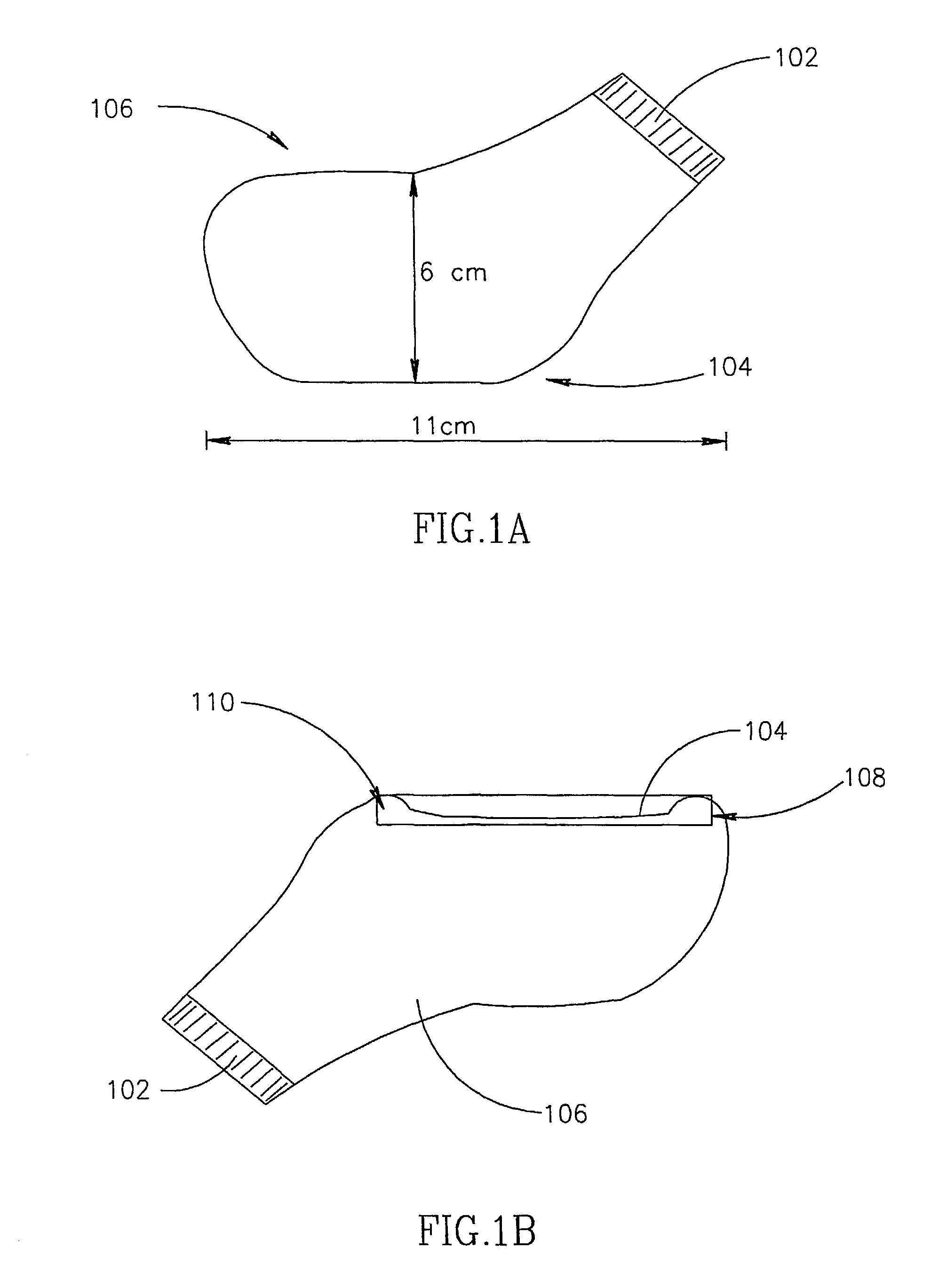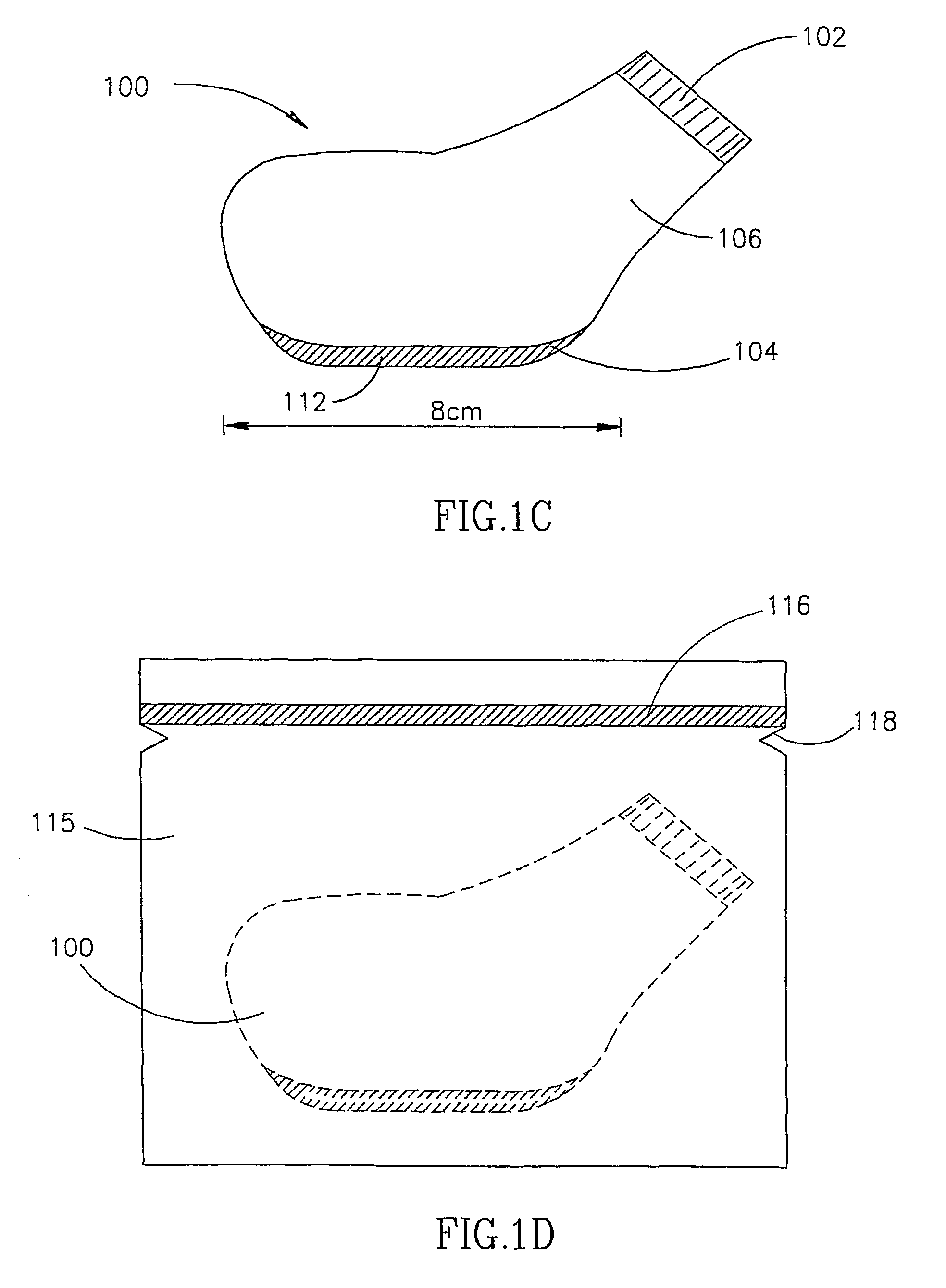Uniform, disposable, interface for multi-element probe
- Summary
- Abstract
- Description
- Claims
- Application Information
AI Technical Summary
Benefits of technology
Problems solved by technology
Method used
Image
Examples
Embodiment Construction
[0095]Reference is now made to FIGS. 1A–1E which schematically illustrate steps in the production and use of a disposable interface 100 comprising a hydrogel mold 112 over a sock 106, in accordance with a preferred embodiment of the invention.
[0096]FIG. 1A schematically illustrates a sock 106, preferably, of a mesh such as a nylon mesh. Preferably, sock 106 comprises an elastic collar 102 and a sole 104. The mesh may be, for example of the type used for nylon hosiery. Dimensions shown in FIGS. 1A and 1C are for illustrative purposes only and depend on the size of the probe on which the interface is fitted. FIG. 1B schematically illustrates the placing of sole 104 in a mold dish 108, and pouring a hydrogel molding material 110 into mold dish 108. FIG. 1C schematically illustrates final interface 100, comprising sock 106 with a hydrogel mold 112 of about 1 mm in thickness on sole 104. Alternatively, hydrogel mold 112 may be between 0.5 mm and 2.0 mm. For applications in which the pixe...
PUM
 Login to View More
Login to View More Abstract
Description
Claims
Application Information
 Login to View More
Login to View More - R&D
- Intellectual Property
- Life Sciences
- Materials
- Tech Scout
- Unparalleled Data Quality
- Higher Quality Content
- 60% Fewer Hallucinations
Browse by: Latest US Patents, China's latest patents, Technical Efficacy Thesaurus, Application Domain, Technology Topic, Popular Technical Reports.
© 2025 PatSnap. All rights reserved.Legal|Privacy policy|Modern Slavery Act Transparency Statement|Sitemap|About US| Contact US: help@patsnap.com



